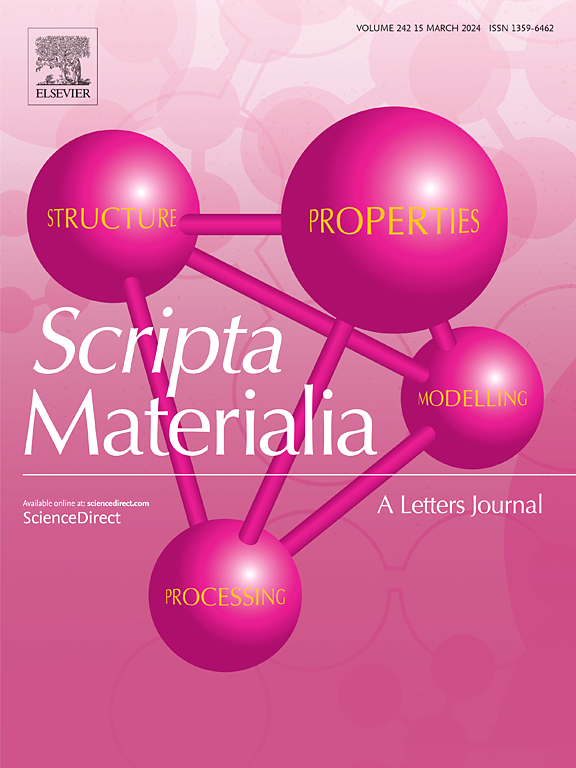通过晶/非晶界面设计的超薄氧化纳米膜具有优异的氢渗透性能
IF 5.3
2区 材料科学
Q2 MATERIALS SCIENCE, MULTIDISCIPLINARY
引用次数: 0
摘要
金属中的氢脆现象推动了抗氢渗透新型陶瓷涂层的发展。本研究首次发现,氧化物的结晶/非晶界面可大大增强其抗氢渗透性。由无定形 Al2O3 和结晶 Cr2O3 组成的超薄氧化物纳米薄膜厚度仅为 80 nm,其氢渗透率极低,仅为 2.1 × 10-16 mol s-1 m-1 Pa-0.5,是钢的 3834 倍。与单独的 Cr2O3 和 Al2O3 纳米薄膜相比,抗氢渗透性分别显著提高了 798 % 和 2030 %。氢同位素分布分析进一步验证了结晶/非晶界面在阻止氢扩散方面的显著效果。这些发现为了解界面对氢阻隔效率的影响提供了宝贵的见解,并为开发高效的氢利用陶瓷涂层打开了一扇大门。本文章由计算机程序翻译,如有差异,请以英文原文为准。

Superior hydrogen permeation resistance in ultrathin oxide nanofilm via crystalline/amorphous interface design
Hydrogen embrittlement in metals is driving the development of novel ceramic coatings resistant to hydrogen permeation. In this study, for the first time, the crystalline/amorphous interface of oxides was found to greatly enhance their hydrogen permeation resistance. With thickness of only 80 nm, the ultrathin oxide nanofilm consisting of amorphous Al2O3 and crystalline Cr2O3 exhibited an exceptionally low hydrogen permeability of 2.1 × 10–16 mol s−1 m−1 Pa−0.5, 3834 times lower than that of the steel. The hydrogen permeation resistance was remarkably improved by 798 % and 2030 % as compared to the sole Cr2O3 and Al2O3 nanofilm, respectively. Hydrogen isotope distribution analyses further verified the remarkable effect of the crystalline/amorphous interface for retarding hydrogen diffusion. These findings provide valuable insights into the impact of interface on the hydrogen barrier efficiency and open a door for developing highly efficient ceramic coatings for hydrogen utilization.
求助全文
通过发布文献求助,成功后即可免费获取论文全文。
去求助
来源期刊

Scripta Materialia
工程技术-材料科学:综合
CiteScore
11.40
自引率
5.00%
发文量
581
审稿时长
34 days
期刊介绍:
Scripta Materialia is a LETTERS journal of Acta Materialia, providing a forum for the rapid publication of short communications on the relationship between the structure and the properties of inorganic materials. The emphasis is on originality rather than incremental research. Short reports on the development of materials with novel or substantially improved properties are also welcomed. Emphasis is on either the functional or mechanical behavior of metals, ceramics and semiconductors at all length scales.
 求助内容:
求助内容: 应助结果提醒方式:
应助结果提醒方式:


